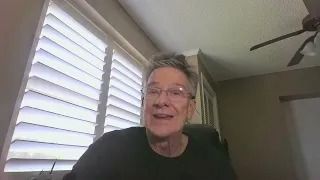Baby Boomers oust Millennials as largest generation of buyers 76% of homebuyers in 2022 said they would recommend their agent
Baby Boomers overtook Millennials as the largest generation of homebuyers in the year ending July 2022, according the National Association of Realtor’s 2023 Generational Trends report published on Tuesday.
The combination of Older Millennials (aged 33-42) and Younger Millennials (aged 24-32) have been the top group of home buyers since 2014, but in 2022, the Millennial cohort of homebuyers dropped from 43% in 2021 to 28% in 2022. In comparison, the combination of Older Boomers (aged 68-76) and Younger Boomers (aged 58-67) made up 39% of home buyers in 2022, up from 29% a year ago.
“Baby boomers have the upper hand in the homebuying market,” Jessica Lautz, NAR’s deputy chief economist and vice president of research, said in a statement. “The majority of them are repeat buyers who have housing equity to propel them into their dream home – be it a place to enjoy retirement or a home near friends and family. They are living healthier and longer and making housing trades later in life.”
The report examines the similarities and differences of recent home buyers and sellers across generations. Data for the report was collected in July 2022 when NAR mailed a 129-question survey to a random sample of 153,045 home buyers who had purchased a home between July 2021 and June 2022, weighted to be representative of sales on a geographic basis. A total of 4,854 responses were received from primary residence buyers.
Industry experts attribute the shrinking share of Millennial buyers to debt challenges. Of all generations, Older Millennial and Generation X buyers’ purchases were delayed a median of five years, the longest among all generations, due to debt. Across generations, buyers were delayed in their home purchase due to student loan debt, with 35% of Younger Millennials reporting having student loan debt with a median loan balance of $30,000, and 30% of Older Millennials with a median of $40,000. In comparison, just 9% of Baby Boomers reported having student loan debt, with Older Boomers having a median balance of just $9,000.
In addition to representing the largest share of buyers, Baby Boomer also represented the largest home seller generation at 52% of sellers in 2022, up from 42% in 2021. While Generation Z (aged 18-24) made up 4% of home buyers, up from 2% in 2021, with 30% of Generation Z buyers moving directing from a family home into homeownership.
“As the youngest generation of home buyers and sellers, it’s encouraging to see Gen Z entering the market,” Lautz said. “Their desire for homeownership is strong, and many are relying on family support systems to help make their first real estate purchase.”
Overall, 26% of all buyers were first-time buyers, down from 34% a year prior. This is also the lowest share of first-time buyers since NAR began tracking the metric. Broken down by generation, Younger Millennials had the largest share of first-time buyers at 70% of all Younger Millennial buyers, followed by Older Millennials (46%), Generation X, who are those aged 43-57, (21%) and Younger Boomers (9%).
Among all generations, sellers remained in their homes an average of 10 years, up from nine years in 2021, with Younger Millennials spending the fewest number of years in their home at four year, and Older Boomers spending the longest amount of time in their home at 16 years. Those who purchased homes in 2022 reported that they expect to spend 15 years in their new home, up from 12 years in 2021.
The vast majority (88%) of buyers view their home purchase as a good investment, with 74% of younger millennials and 77% of older millennials viewing a home as better than or about as good a financial investment as stocks.
“Owning a home is more than just a financial investment. It’s a symbol of stability, independence and community that helps people build their lives and achieve their dreams,” Kenny Parcell, NAR’s president, said in a statement.
Of all homebuyers, 86% of buyers used an agent to purchase their home. Across all generation, the most common way to find an agent was through a referral, with 38% of buyers finding their agent this way.
Homebuyers reported that they turned to agents because they wanted help finding the right home to purchase (49%), negotiating the terms of sale (13%) and negotiating the price (11%). Younger (14%) and older (12%) millennials were most likely to want their agent to help with paperwork.
For all buyers an agent’s experience was the most important factor (20%), followed by their honesty and trustworthiness (17%), reputation (16%), and if they have a caring personality/are a good listened (11%).
Across all generations, 76% of buyers said they would use their agent again or recommend their agent to other buyers or sellers.
Have A Question?
Use the form below and we will give your our expert answers!
Reverse Mortgage Ask A Question
Start Your Loan
with DDA todayYour local Mortgage Broker
Mortgage Broker Largo See our Reviews
Looking for more details? Listen to our extended podcast!
Check out our other helpful videos to learn more about credit and residential mortgages.





